SingularityNET - a blockchain-based open market for interoperating AIs
SingularityNET?
SingularityNET is an open and decentralized network of AI services made accessible through the blockchain. AI developers publish their services onto the SingularityNET network where they can be used by anyone with an internet connection. AI deveopers are able to charge for the use of their services using the native AGI token -- an ERC20 token hosted on Ethereum.
Key Objectives
- Transitioning from Narrow AI to Artificial General Intelligence (AGI)
- Providing business with Smarter, Broader, more Automated AI Services
- Ensuring AI is applied for the common good
SingularityNET and OpenCog
SingularityNET loosely couples multiple AI algorithms, methods and solutions - enabling them to cooperate as a society and economy of minds.
It believes that intelligence exists on the emergent level of the multi-agent network, as well as on the level of the individual AI agent in the network.
The OpenCog framework approaches AGI by tightly integrating multiple AI methods, enabling them all to use a common dynamic knowledge hypergraph. OpenCog instances, neural networks, and other types of AI agents co-exist and inter-operate within the SingularityNET decentralized cognitive compute fabric.

AGI and NarrowAI to GeneralAI
- AGIs must learn from experience
- An AI should assign meaning to all its idea, abstraction and hypotheses via extrapolation from its observations
- An AGI must build its own model of itself and the world
Multiple narrow AI approaches can play a role in creating AGI
- Evolutionary Learning: Genetic Programming, MOSES, CMA-ES, …
- Logic Systems: Markov Logic Networks, PLN, theorem-provers, …
- Neural Networks: deep and shallow hierarchical networks, heterarchical attractor neural networks (e.g., ECAN), …
- Stochastic Local Search: SAT solvers, SMT, …
- And plenty more ...
Narrow AI General AI
| Narrow AI | General AI |
|---|---|
| Trained or just Programmed | Educated |
| Can only do one thing | Learn to do anything a human can learn and more |
| (e.g., Deep Blue can’t drive a car; Google Car can’t play chess) Can (in principle) | - |
| * Deep Blue * AlphaGo * Facebook Face Recognizer * Google Self Driving Car * IBM Watson for Jeopardy * IBM Watson for Medical | OpenCog and SingularityNET are aimed here |
SingularityNET - The Decentralized AGI Mind-Cloud
SingularityNET Conceptual workflow

AI nodes in the SingularityNET carry out diverse cognitive and analytic operations, and exchange diverse types of data.
AI nodes may join together into "federation" - subnetworks of nodes that habitually work together to carry out particular sorts of tasks.
This is a "network effect" from both business and cognitive perspectives
OpenCog applications
- applying OpenCog to challenging practical problems, helps bridge the gap between here and AGI
- The OpenCog AGI engine is already a core component underlying Sophia, SingularityNET's humanoid spokesperson, built by Hanson Robotics.
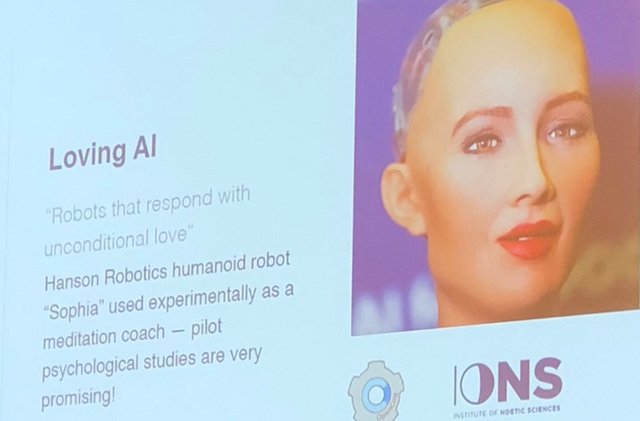
- OpenCog powers the genomic and biomedical inference engine underlying Mozi AI Health, a cutting-edge decentralized cloud service providing advanced intelligence to the discovery of therapeutics and diagnostics and the control of systems biology simulations.
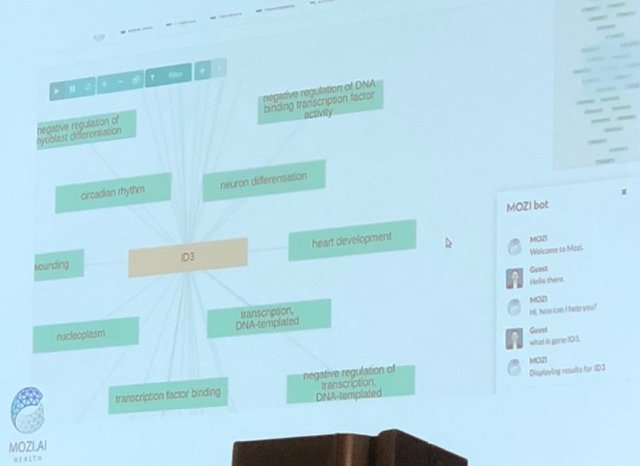
AGI Alpha dApp
This Dapp allows you to browse the list of SingularityNET Agents from the SingularityNET Registry and call them to provide a Service. The Dapp uses the SingularityNET contracts deployed on the Kovan testnet.
- get test AGI token from AGI faucet at https://faucet.singularitynet.io (you need to login with GitHub account)
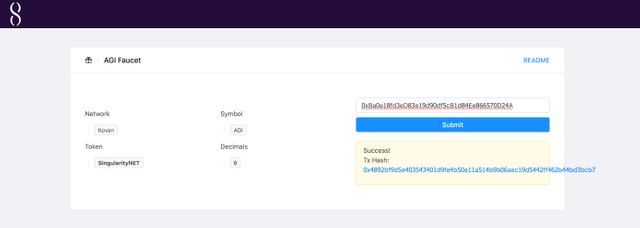
- provide address to get 1 token
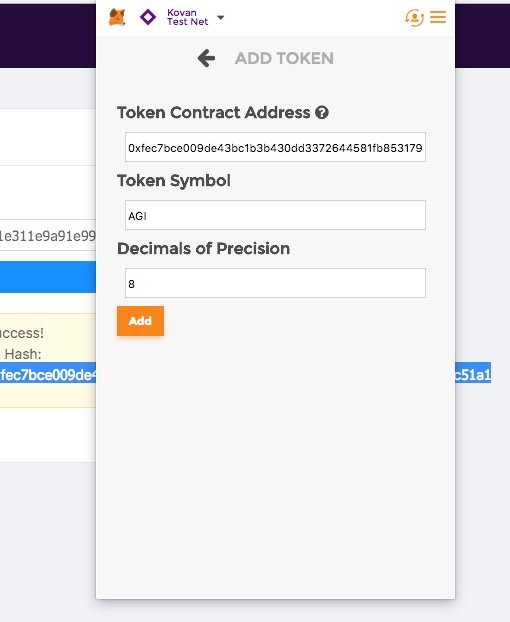
- a token is ready to develop dApp
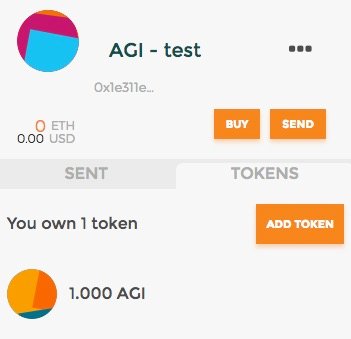
- open http://alpha.singularitynet.io/
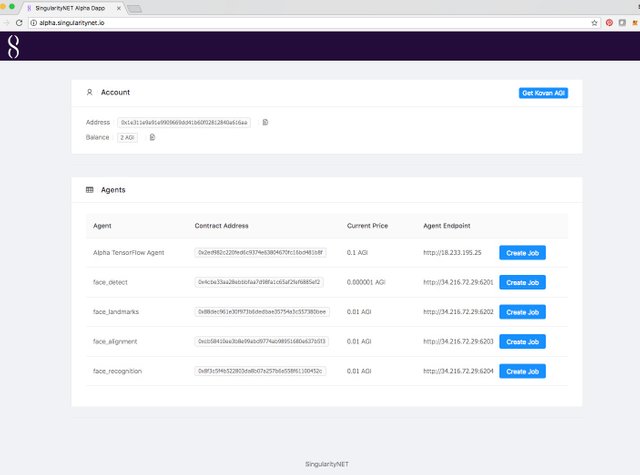
- Click the "Create Job" button to the right of the "Alpha TensorFlow Agent"
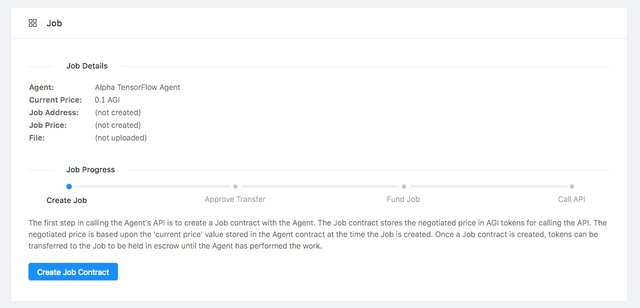
- Click the "Create Job Contract" button at the bottom of the "Job" pane
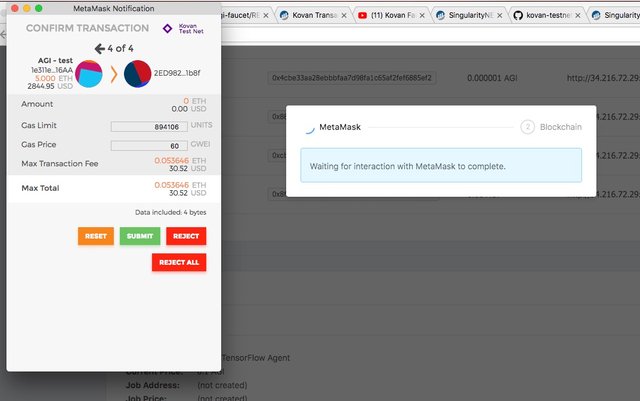
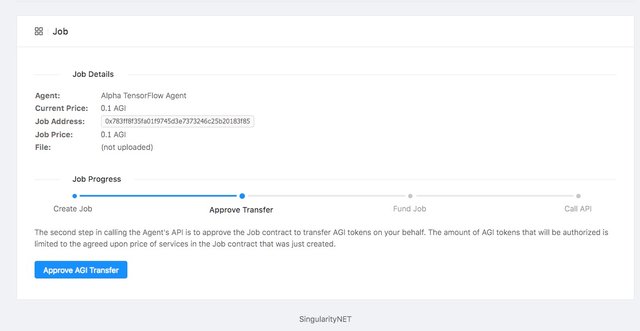
- Click the "SUBMIT" button in the "CONFIRM TRANSACTION" dialogue (repeat until "Call Agent API" button appeared)
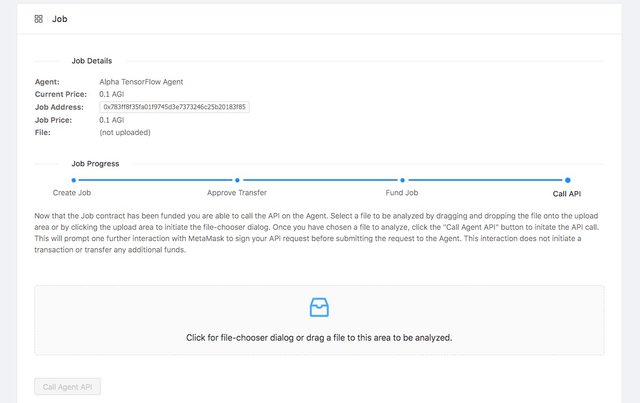
- test API by uploading a file.


References
https://github.com/singnet/wiki/wiki/Overview-%5BAlpha%5D
https://github.com/singnet/alpha-dapp
https://public.singularitynet.io/whitepaper.pdf